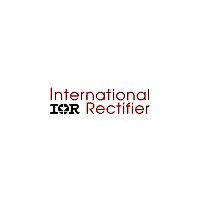IR11662SPBF International Rectifier, IR11662SPBF Datasheet - Page 13

IR11662SPBF
Manufacturer Part Number
IR11662SPBF
Description
IC CNTROL SMART RECTIFIER 8-SOIC
Manufacturer
International Rectifier
Series
Advanced Smart Rectifier™r
Datasheet
1.IR11662STRPBF.pdf
(25 pages)
Specifications of IR11662SPBF
Configuration
High-Side
Input Type
Non-Inverting
Delay Time
60ns
Current - Peak
1A
Number Of Configurations
1
Number Of Outputs
1
Voltage - Supply
11.4 V ~ 18 V
Operating Temperature
-25°C ~ 125°C
Mounting Type
Surface Mount
Package / Case
*
Device Type
MOSFET
Module Configuration
Half Bridge
Peak Output Current
4A
Input Delay
60ns
Output Delay
50ns
Supply Voltage Range
11.4V To 18V
Driver Case Style
SOIC
No. Of Pins
8
Rohs Compliant
Yes
Part Status
Active and Preferred
Package
8-Pin SOIC(NB)
Circuit
Switching Regulator Controller
Topology
Flyback / Resonant Half-Bridge
Current Mode
Discontinuous / Critical
Vcc (min)
11.4
Vcc (max)
18
Vout (max)
200
Iout (a)
+1 / -4
Switch Freq (khz)
up to 500kHz
Vgate Clamp (v)
10.7
Programmability
MOT / OVT
Enable Pin
Yes
Isleep (ua)
200
Automatic Mot Protection
Yes
Pbf
PbF Option Available
Lead Free Status / RoHS Status
Lead free / RoHS Compliant
High Side Voltage - Max (bootstrap)
-
Available stocks
Company
Part Number
Manufacturer
Quantity
Price
Part Number:
IR11662SPBF
Manufacturer:
IR
Quantity:
20 000
www.irf.com
General Description
The IR11662 Smart Rectifier IC can emulate the operation of diode rectifier by properly driving a
Synchronous Rectifier (SR) MOSFET. The direction of the rectified current is sensed by the input comparator
using the power MOSFET R
accordingly.
Internal blanking logic is used to prevent spurious transitions and guarantee operation in continuous (CCM),
discontinuous (DCM) and critical (CrCM) conduction mode.
IR11662 is suitable for Flyback and Resonant Half-Bridge topologies.
Flyback Application
The modes of operation for a Flyback circuit differ mainly for the turn-off phase of the SR switch, while the
turn-on phase of the secondary switch (which corresponds to the turn off of the primary side switch) is
identical.
Turn-on phase
When the conduction phase of the SR FET is initiated, current will start flowing through its body diode,
generating a negative V
the one caused by the MOSFET on resistance and therefore will trigger the turn-on threshold V
At that point the IR11662 will drive the gate of MOSFET on which will in turn cause the conduction voltage
VDS to drop down. This drop is usually accompanied by some amount of ringing, that can trigger the input
comparator to turn off; hence,
power MOSFET on for a minimum amount of time.
The programmed MOT will limit also the minimum duty cycle of the SR MOSFET and, as a consequence, the
max duty cycle of the primary side switch.
DCM/CrCM Turn-off phase
Once the SR MOSFET has been turned on, it will remain on until the rectified current will decay to the level
where V
operation.
In DCM the current will cross the threshold with a relatively low dI/dt. Once the threshold is crossed, the
current will start flowing again thru the body diode, causing the V
the amount of residual current, V
blanked for a certain amount of time (T
The blanking time is internally set. As soon as V
is terminated and the IC is ready for next conduction cycle.
DS
will cross the turn-off threshold V
DS
V
voltage across it. The body diode has generally a much higher voltage drop than
TH2
Dson
a Minimum On Time (MOT) blanking period is used that will maintain the
Figure 1: Input comparator thresholds
DS
as a shunt resistance and the GATE pin of the MOSFET is driven
may trigger once again the turn on threshold: for this reason V
BLANK
V
TH1
) after V
TH1
DS
V
. This will happen differently depending on the mode of
Gate
TH1
crosses the positive threshold V
13
has been triggered.
DS
voltage to jump negative. Depending on
V
TH3
TH3
© 2010 International Rectifier
V
DS
also the blanking time
IR11662S
TH2
.
TH2
is














